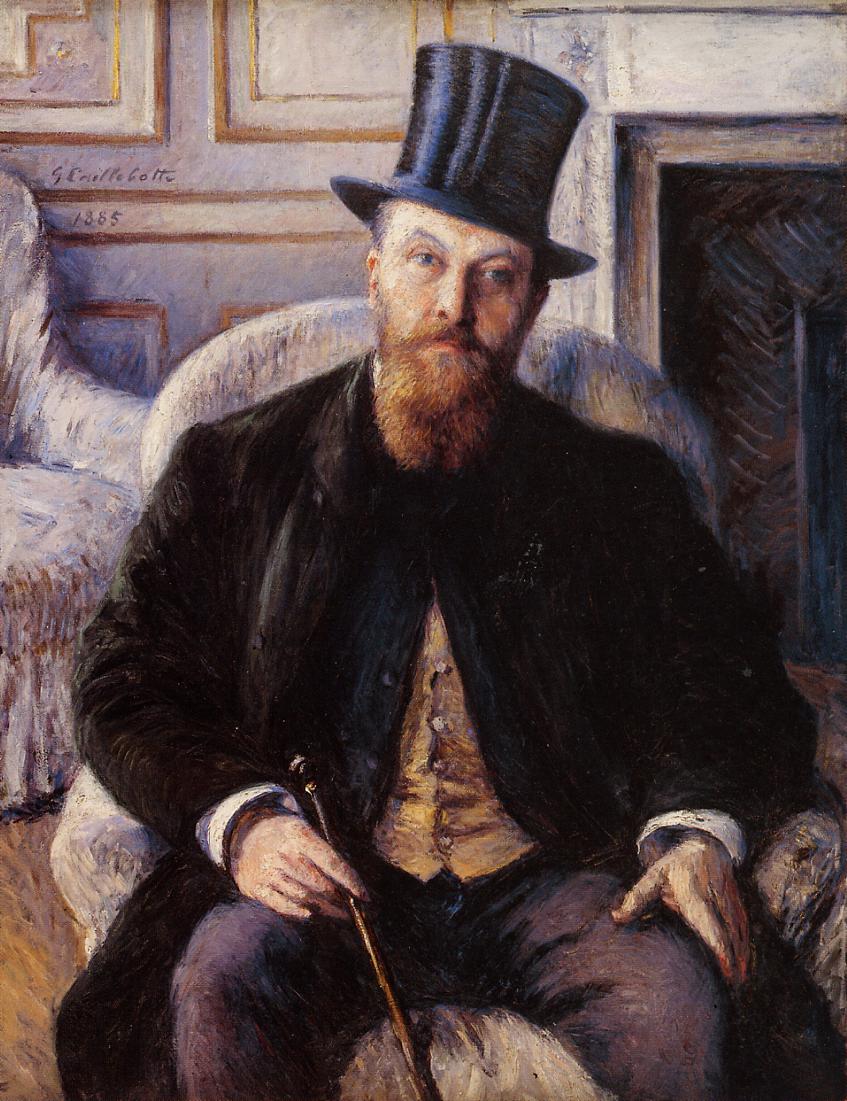Despite the limited visibility of the garments, the figures depicted in Henry Lerolle’s The Organ Rehearsal can be seen as a fashionable group of churchgoers to 1885 standards — complete with plumed hats, bustled skirts, and simple dark male suiting.
About the Artwork
Henry Lerolle was born in 1848 in Paris, France. He began his artistic career as a pupil of the influential painter Louis Lamothe, who also served as a teacher for Edgar Degas, James Tissot, and Henri Regnault, among other notable artists. Prior to attending the Académie Suisse, Lerolle frequently sketched in the Louvre, making copies of paintings by Nicolas Poussin, Paolo Veronese and Peter Paul Rubens (Bajou). As noted by Valérie M. C. Bajou, Lerolle drew inspiration from the successful salon artists of the time, painting works:
“that owed much to the scenes of contemporary life by Jules Bastien-Lepage, Henri Gervex, Alfred Roll and Jean Charles Cazin, who introduced the taste for naturalistic observation, bright colouring and plein-air painting to the official Salons.”
The Organ Rehearsal is Lerolle’s most celebrated painting, according to the Metropolitan Museum of Art. The artist produced multiple variations of the painting, none of which were to the same scale as the version currently displayed at the Met (7.8 x 11.9 ft). One of the smaller scale variations (Fig. 1) was sold in 2016 to the private New York collector.
Fig. 1 - Henry Lerolle (French, 1848-1929). À l'orgue, ca. 1885. Oil on canvas; (40 x 59 ¾ in, 3.3 x 4.9 ft). New York. Source: Christie's
Reviews of the work at the Paris Salon of 1885 were mixed. According to Isabelle Duvernois, an associate conservator at the Metropolitan Museum of Art, Lerolle likely made changes after the Salon:
“One reviewer states that it was unfinished, and the various contemporary accounts, while not always consistent, indicate that Lerolle must have modified his composition later. Two sources fail to mention either the woman standing behind the organ player or the young man at the far left. One catalogue of the Salon describes all the figures except the standing woman. Both figures had been added by December 1886, when an engraving of À l’orgue by Rousseau was printed in L’Illustration.” (217)
The public, however, was apparently captivated; according to Christie’s: “When the larger version was exhibited in the Salon, one critic remarked, ‘spectators … spoke low before it, as if waiting for … the voice of the singer to be heard.'” Initially displayed at the Salon of Paris in 1885 under the name À l’orgue, The Organ Rehearsal has had three different titles during its series of exhibitions. It was first presented with the title À l’orgue at the Salon of Paris in 1885 — the name most likely chosen by Lerolle himself. The next name, catering to the English-speaking New Yorkers planning to attend the 1886 Metropolitan Museum of Art showing, was simply The Organ. This was a shortened English translation from the original French (“At the Organ”). The painting continued to be exhibited alongside the works of the French Impressionists under the title The Organ from 1886-1887. It is not indicated when the museum settled on The Organ Rehearsal, to which it is referred to today.
Fig. 2 - Henry Lerolle (French, 1848-1929). The Organ Rehearsal, detail, 1885. Oil on canvas; (93 1/4 x 142 3/4 in (7.8 x 11.9 ft)). New York: Metropolitan Museum of Art, 87.8.12. Gift of George I. Seney, 1887. Source: The Met
Fig. 3 - Odilon Redon (French, 1840-1916). Madame Arthur Fontaine (Marie Escudier, born 1865), 1901. Pastel on paper; 72.4 x 57.2 cm (28 1/2 x 22 1/2 in). New York: Metropolitan Museum of Art, 60.54. The Mr. and Mrs. Henry Ittleson Jr. Purchase Fund, 1960. Source: The Met
Each figure within The Organ Rehearsal is modeled after the artist’s family and friends. The main subject of the piece, the female singer (Fig. 2) is believed to be a likeness of Marie Escudier (Fig. 3), the youngest sister of Lerolle’s wife Madeleine. According to the Met, his wife Madeleine is seated sans hat in figure 4 next to her other sister Jeanne, painted to her left. Lerolle himself makes an appearance in this work, standing second from the left, as highlighted in figure 5. An account by Lerolle’s son Guillaume recalls how other figures include an unidentified family member of Lerolle (partially obstructed from view) and the artist’s mother Amable de La Roche, who stands behind the organist. The organist in the work is assumed to be the either Ernest Chasson, friend of Lerolle’s and husband of Jeanne. Another option hypothesized is the organist Albert Renaud, employed at the church depicted during this time (Duvernois 217).
Fig. 4 - Henry Lerolle (French, 1848-1929). The Organ Rehearsal, detail, 1885. Oil on canvas; (93 1/4 x 142 3/4 in (7.8 x 11.9 ft)). New York: Metropolitan Museum of Art, 87.8.12. Gift of George I. Seney, 1887. Source: The Met
Fig. 5 - Henry Lerolle (French, 1848-1929). The Organ Rehearsal, detail, 1885. Oil on canvas; (93 1/4 x 142 3/4 in (7.8 x 11.9 ft)). New York: Metropolitan Museum of Art, 87.8.12. Gift of George I. Seney, 1887. Source: The Met
Henry Lerolle (French, 1848–1929). The Organ Rehearsal. 1885. Oil on Canvas. 93 1/4 x 142 3/4 in (7.8 x 11.9 ft). New York: Metropolitan Museum of Art. 87.8.12. Gift of George I. Seney. 1887. Source: MET

About the Fashion
D espite the limited visibility of the garments depicted in the painting, it can be understood that the figures are appropriately dressed for churchgoing in 1885. The main subject of the painting — the female singer at the front of the balcony, wears a round brim hat with black fabric (likely silk) circling the crown. The bright yellow feather adorning the front of the hat acts as the focal embellishment. The woman seated furthest to the left boasts a similar style, as does the woman behind the organist. These decorative brimmed hats were popular in 1885 — featured in various fashion plates and watercolor illustrations that year. An example is showcased in an 1885 La Mode illustrée fashion plate (Fig. 6). This accessory, similar to those worn by the three women in The Organ Rehearsal, features a silk band, wrapping around the crown to support sprigs of flowers. A colored plume can also be seen decorating a hat worn by a figure in an 1885 Peterson’s Magazine plate (Fig. 7). While the shape of the brim differs slightly (peaked and lifting farther from the wearer’s face) from that of those depicted in The Organ Rehearsal, all of the hats noted feature similar design choices in ground fabric and embellishment.
The singer’s ensemble is relatively simple, constructed of mainly black fabric, paired with what appears to be a white chemise. She wears a jacket paired with a pleated skirt that features a bustle to properly support the overall silhouette. According to Harper’s Bazar (October 16, 1886):
“For mornings, shopping, charity visiting, and church, a well-dressed woman never wears anything else than a tailor dress: that is, with a round skirt, plain or pleated, a jacket waist, a fine linen plastron, and a cravat – in a word, almost the same costume that would be used for riding, with the exception of the long skirt. The hat even closely resembles that worn by men, since it is, especially for morning toilettes, a round hat, made of felt with a long silky fleece, with a high crown, and brim lined with velvet, and trimmed with a single feather standing erect.” (675)
While the front of the dress in The Organ Rehearshal is not fully visible, it can be assumed from the side profile that it features a bodice similar to that of the dress in the 1885 fashion plate by Gustave Janet (Fig. 8). Both garments feature a sharp bustle silhouette and similar pleated skirt construction as can be seen in an Emile Pingat gown of 1885 (Fig. 9).
Fig. 6 - Artist unknown. La Mode Illustrée, p. 141, n. 58, 1885. Source: Bunka Gakuen Library
Fig. 7 - Artist unknown. Detail of Peterson’s Magazine, plate 48, 1885. New York: Metropolitan Museum of Art, b17509853. Gift of Leo Van Witsen. Source: The Met
Fig. 8 - Gustave Janet (French, 1829-1898). La Mode artistique, 1885. Source: Pinterest
Fig. 9 - Emile Pingat (French, 1820-1901). Dress, 1885. New York: Metropolitan Museum of Art, 2009.300.628a, b. Brooklyn Museum Costume Collection at The Metropolitan Museum of Art, Gift of the Brooklyn Museum, 2009; Gift of Lillian E. Glenn Peirce and Mabel Glenn Cooper, 1929. Source: The Met
Fig. 10 - Édouard Bisson (French, 1856-1939). A Windy Day, 1884. Oil on canvas; 159 x 89 cm (62.5 x 35 in). Private Collection. Source: Tutt'Art
The woman sitting farthest to the left with the hat on, as well as the woman standing behind the organist, both sport ensembles comparable to that worn in figure 10 – dresses with high necklines, compared to the slightly lower cut worn by the singer. Despite limited visibility of the dresses’ skirts, it can be assumed that the garments worn by the women in The Organ Rehearsal have also bustle silhouettes similar to that featured in A Windy Day. Similar accessories include round brim hats with a plume and an umbrella that may have been hidden from view.
Direct links can also be made between the outfit featured on the seated woman furthest to the right to those photographed in Studio Portrait of Two Women Holding Folded Parasols (Fig. 11) — high collars and similar construction in the skirts’ drapery, despite the painted figure’s seated position altering the overall shape.
The simple garments worn by the male figures (Fig. 12) in the The Organ Rehearsal properly reflect the trends of male fashion in 1885. This notion can be supported by a direct comparison between Lerolle’s group of men to Gustave Caillebotte’s Portrait de Jules Dubois (Fig. 13). All are depicted in a black jacket, paired with a buttoned waistcoat and lighter shirt underneath. However, unlike Dubois, none of the men in The Organ Rehearsal are wearing top hats — a popular accessory for upper class men. It can be concluded that the painted figures had removed their top hats upon entering the church setting. Comparisons can also be drawn in regards to the style of the figures’ facial hair. All of the men in the painting, like Dubois, sport a reddish-brown beard and mustache of very similar shape and length.
Fig. 11 - Artist unknown (American). [Studio Portrait of Two Women Holding Folded Parasols], ca. 1885. Tintype; 8.9 x 6.4 cm (3 1/2 x 2 1/2 in). New York: Metropolitan Museum of Art, 2000.100. Gift of Steven Kasher, 2000. Source: The Met
Fig. 12 - Henry Lerolle (French, 1848-1929). The Organ Rehearsal, detail, 1885. Oil on canvas; (93 1/4 x 142 3/4 in (7.8 x 11.9 ft)). New York: Metropolitan Museum of Art, 87.8.12. Gift of George I. Seney, 1887. Source: The Met
Fig. 13 - Gustav Caillebotte (French, 1848-1894). Portrait de Jules Dubois, 1885. Oil on canvas; 117 x 89 cm (46 x 35 cm in). Private Collection. Source: Wikiart
Although the viewer is unable to see the entirety of any of the garments painted by Lerolle, a study of the visible components compared to other en vogue 1885 ensembles, it can be inferred that the artist depicted a fashionable group. Adorned in round brim hats with high colorful plumes, bustled skirts, and simple dark male suiting, this group enjoyed churchgoing in style.
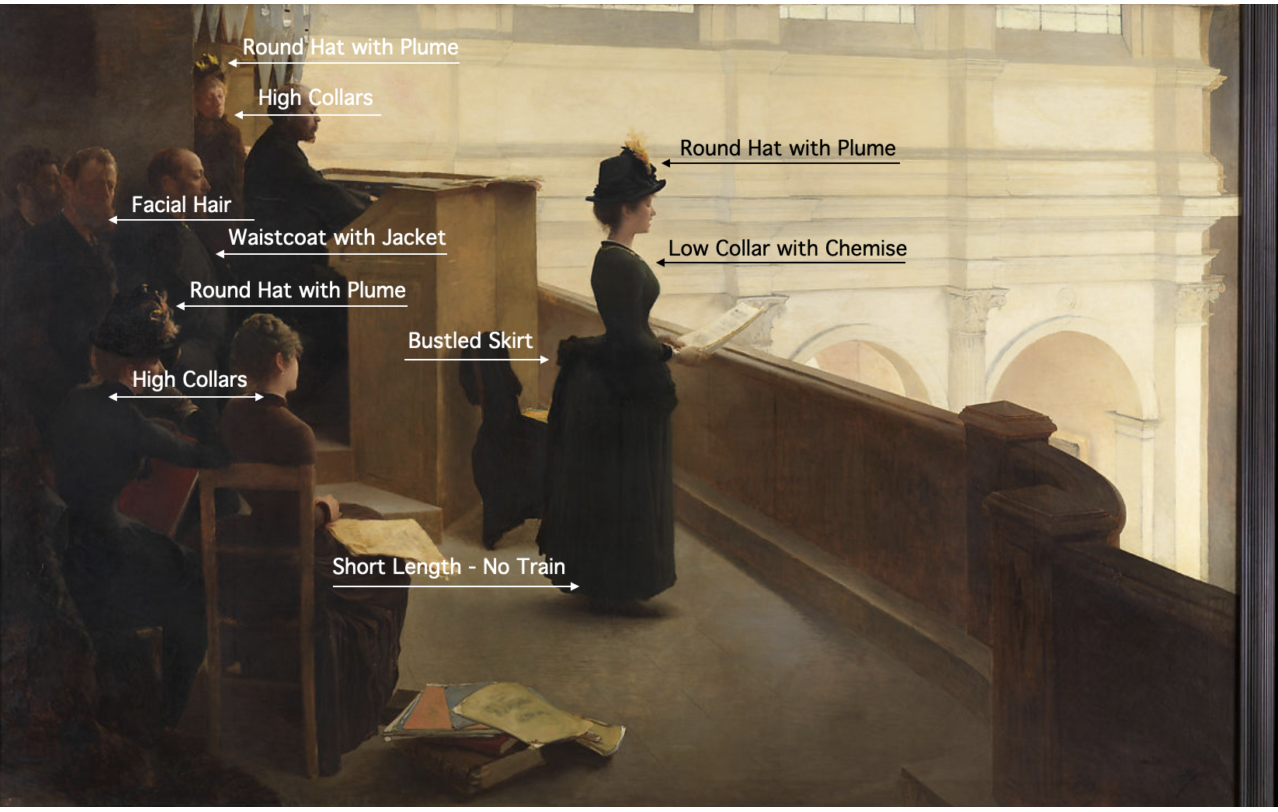
Diagram of referenced dress features. Source: Grace Schechter
References:
- Bajou, Valérie M. C. “Lerolle, Henry.” Grove Art Online, https://www.oxfordartonline.com/benezit/view/10.1093/benz/9780199773787.001.0001/acref-9780199773787-e-00108223
- Christie’s. “Henry Lerolle, À l’orgue.” https://www.christies.com/lot/lot-5989844
- Duvernois, Isabelle. “A Technical Study of Henry Lerolle’s ‘Organ Rehearsal.’” Metropolitan Museum Journal 45. 2010. 217–224. https://www.metmuseum.org/art/metpublications/A_Technical_Study_of_Henry_Lerolles_Organ_Rehearsal_The_Metropolitan_Museum_Journal_v_45_2010
- “Peaked Hat.” Harper’s Bazar 17, no. 51 (December 20, 1884): 809, 815. https://www.proquest.com/magazines/peaked-hat/docview/1832469328/se-2?accountid=27253.
- Raymond, Emmeline. “Paris Fashions.” Harper’s Bazar 13, no. 17 (April 24, 1880): 257-258. https://www.proquest.com/magazines/paris-fashions/docview/1832507697/se-2?accountid=27253.
- Raymond, Emmeline. “Paris Fashions.” Harper’s Bazar 19, no. 42 (October 16, 1886): 675. https://www.proquest.com/magazines/paris-fashions/docview/1914171790/se-2?accountid=27253.
- “The Organ Rehearsal.” Metropolitan Museum of Art, https://www.metmuseum.org/art/collection/search/436880.

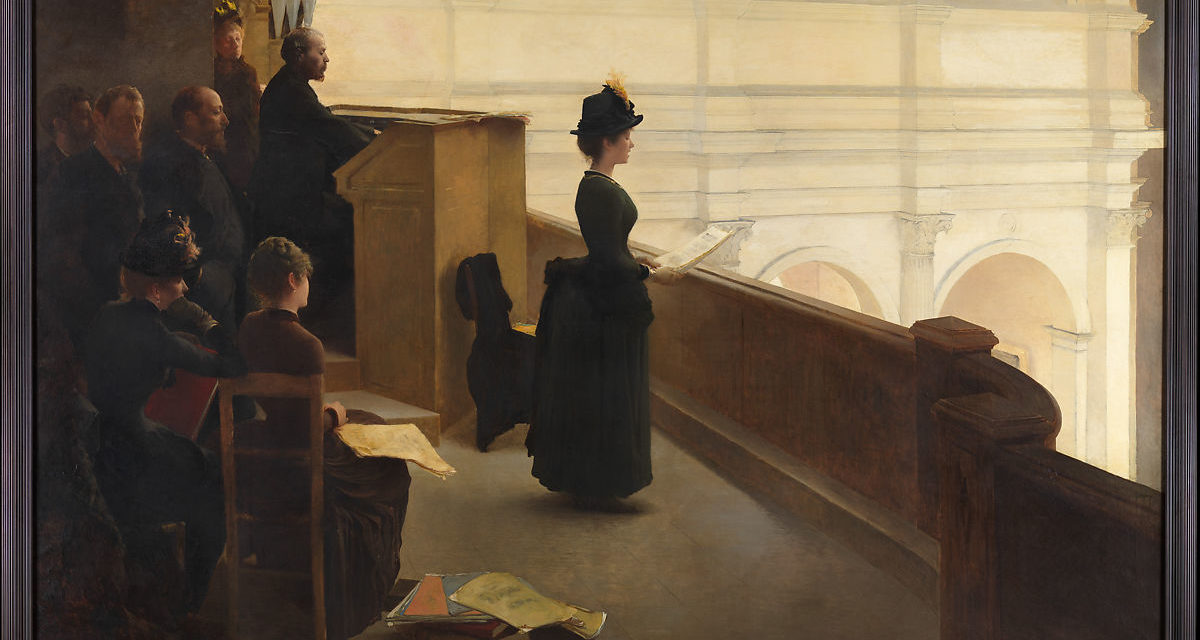
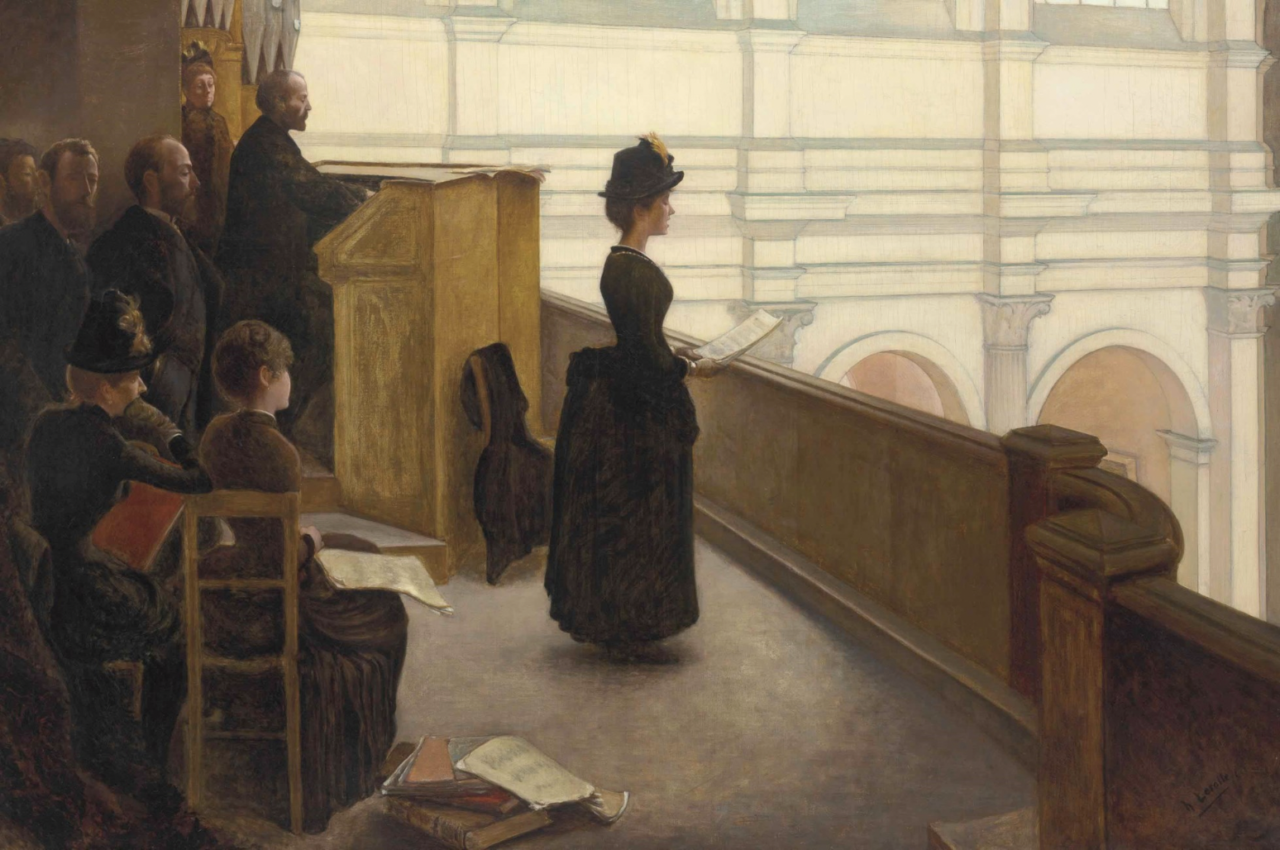
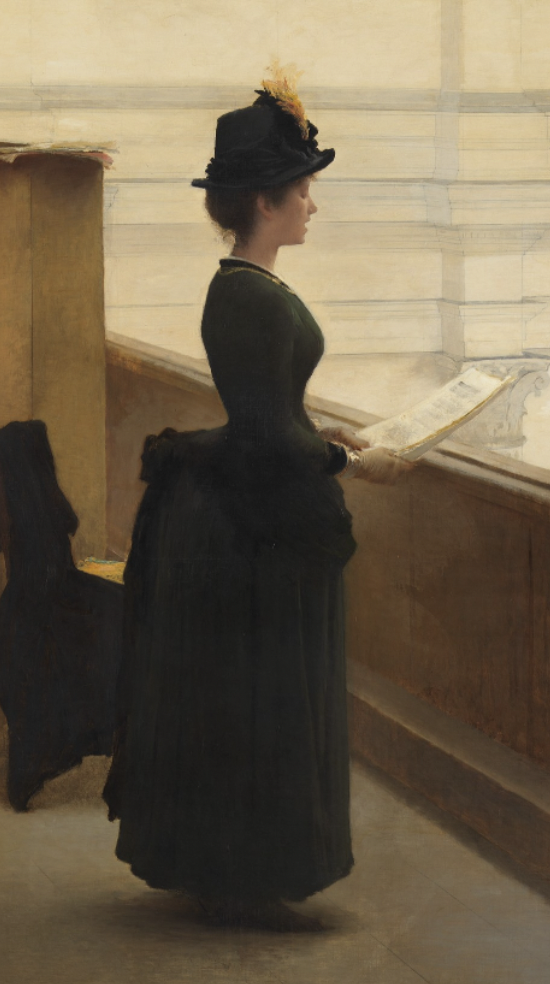

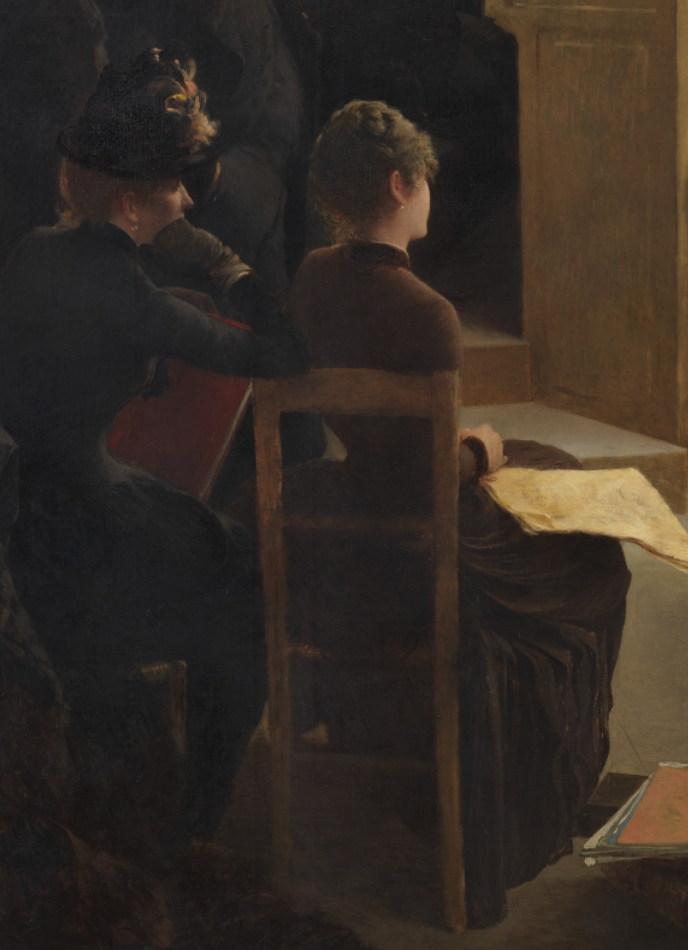
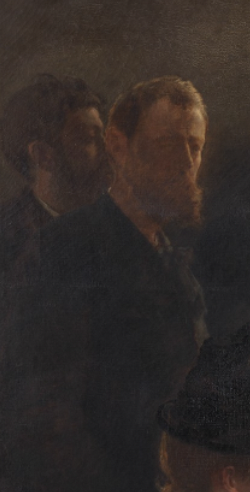
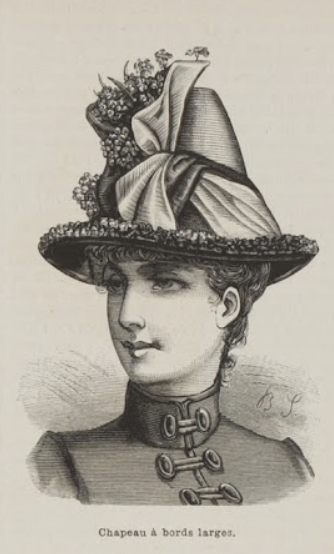
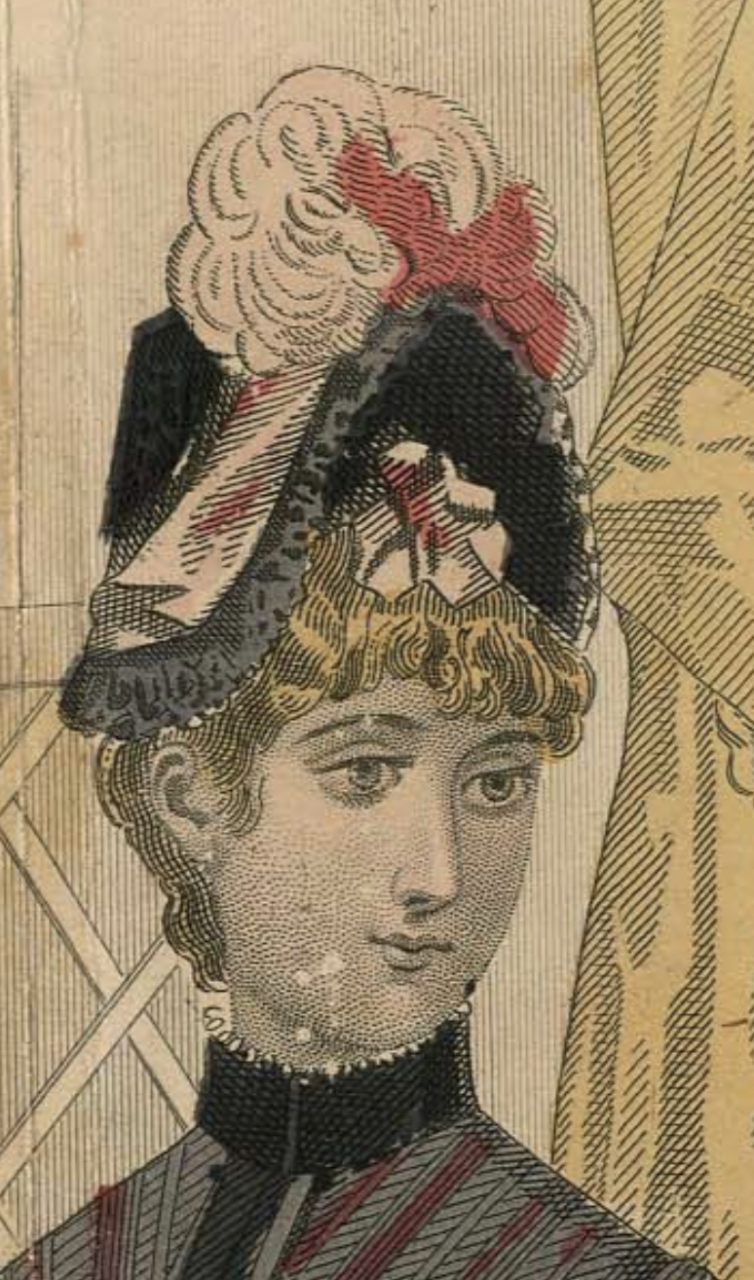
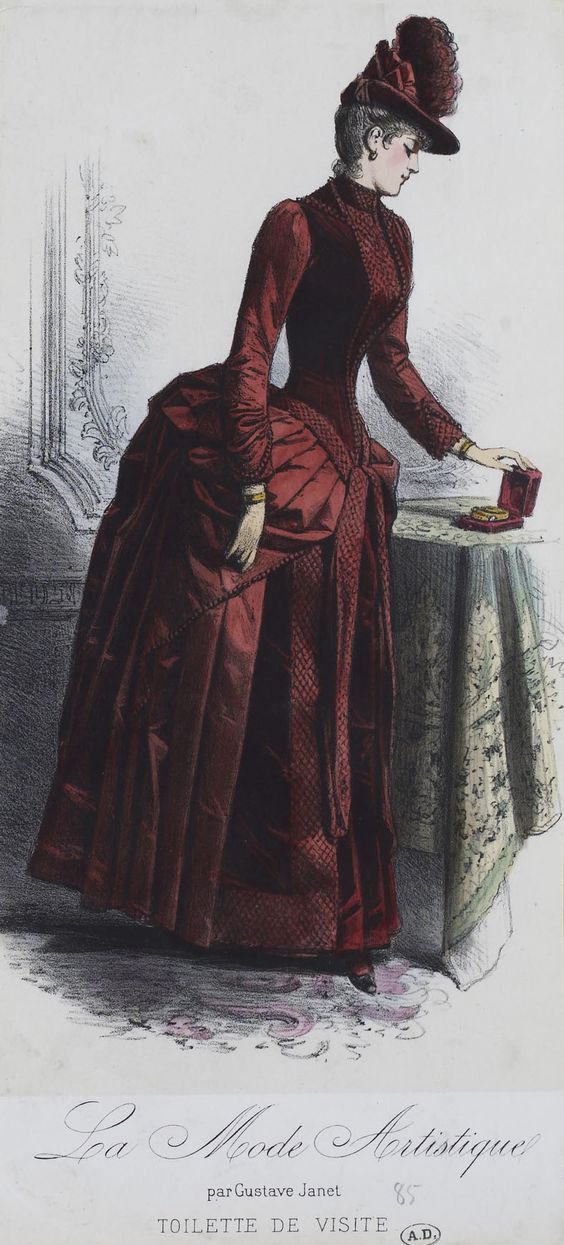
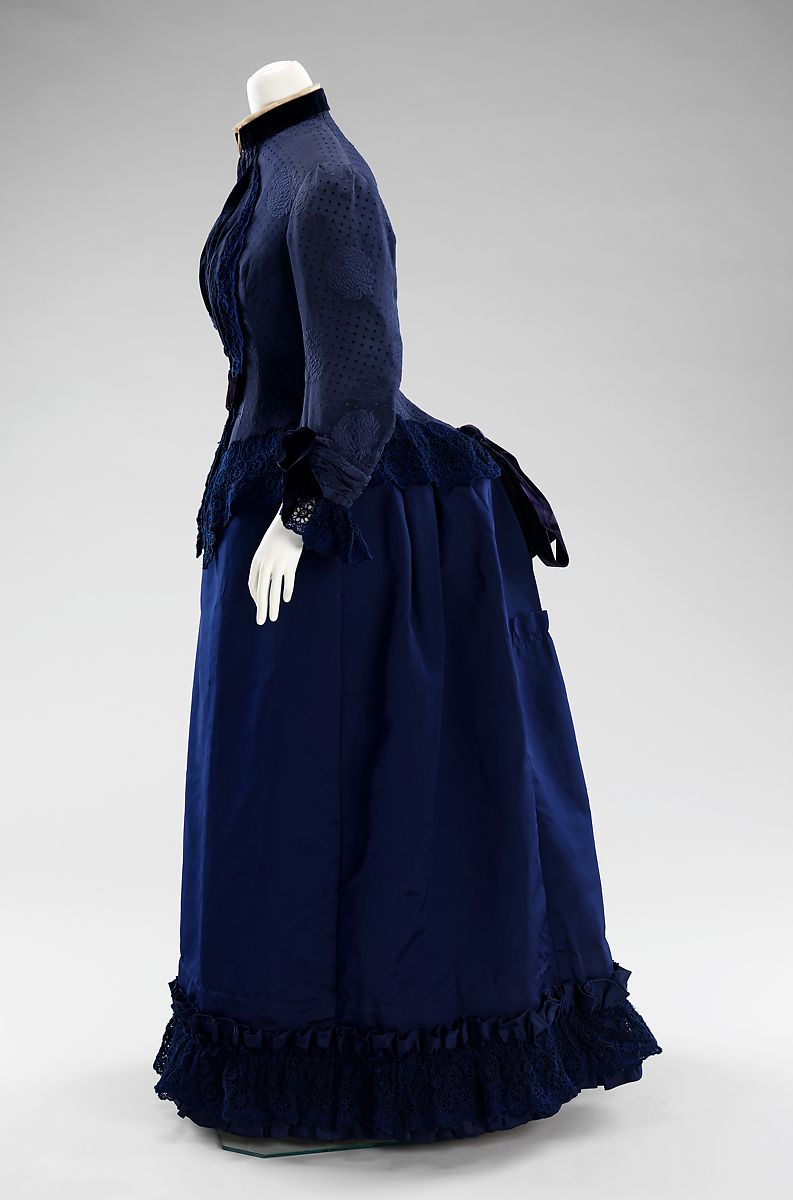

![[Studio Portrait of Two Women Holding Folded Parasols] [Studio Portrait of Two Women Holding Folded Parasols]](https://fashionhistory.fitnyc.edu/wp-content/uploads/2022/05/main-image-2-1.jpeg)

